Some of the wonders that await visitors to the ATF Firearms Technology Branch.
By Jim Schatz & Dan Shea
At a facility in West Virginia, there exists what might be considered the home of the American Government’s firearms technical excellence, which includes a unique working firearms collection not before shown to the public. Imagine a facility staffed by highly experienced, dedicated working professionals charged with providing legally undisputable firearms and ammunition technical support to US Federal and local government agencies and friendly foreign governments. Imagine the assembly of a collection of rare, one-of-a-kind prototypes, first run samples, failed industry ideas and highly collectable once-transferable ordnance pieces ranging from the Colt AR-15 Model 607 (Model 7) to Russian Model 1905 Brass Maxim water-cooled machine guns. Conceive, as well, of the compilation of a firearms and ammunition reference library second to none comprised of extensive technical data on a world of offerings in small arms and ordnance materials. Task this organization with defining and enforcing the complex sea of applicable regulations and interpretations as they relate to the technical aspects of firearms and their classification under Federal laws. Combine all of this into one outfit and you would have the Firearms Technology Branch (FTB) of the Bureau of Alcohol, Tobacco, Firearms and Explosives (ATF).

In the ATF chain of command, FTB is part of the Firearms Programs Division, which, in turn, is directed by the Office of Enforcement Programs and Services (EPS). Few SAR readers need much of an introduction to ATF. Where this article will tread new ground is in revealing the fascinating collection of firearms, ordnance items, accessories, and dangerous and unusual pieces that make up the “National Firearms Collection” (NFC). The highly experienced staff of the ATF Firearms Technology Branch has overall responsibility for the management of this one-of-a-kind collection that is comprised of more than 10,000 serial numbered items. It is certainly safe to say that no other collection of this type exists anywhere in the United States. Small Arms Review was offered an exclusive chance to be the first and only small arms periodical to cover the contents of this fascinating collection. This assemblage of reference firearms was first compiled by the Bureau of Internal Revenue, later to become the IRS that we know today, as criminal evidence acquired as early as 1931. The items were later transferred to ATF in July 1972 when this entity first separated from the IRS and became a distinct Bureau within the Treasury Department. These older IRS-era pieces are some of the most fascinating items in the collection as they are still complete with the original hand written evidence tags.
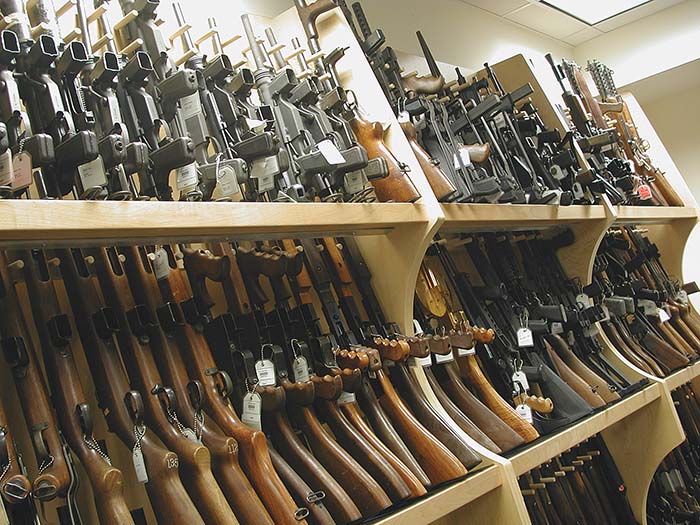
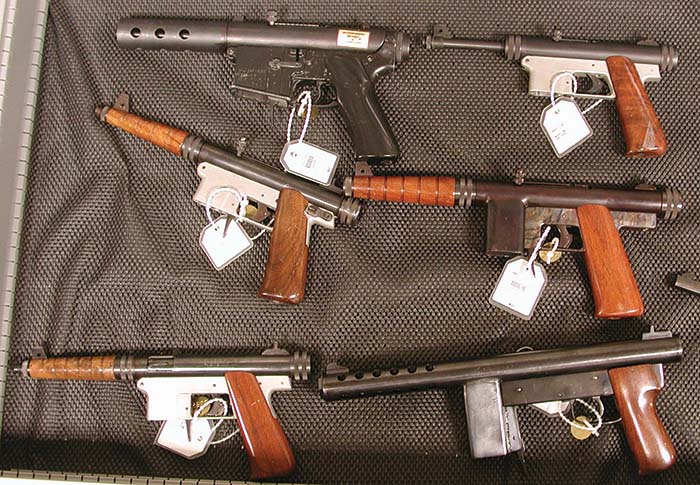
Mission First

The mission of the FTB is multifaceted. The workforce of Firearm Enforcement Officers and support personnel, which includes armorers and administration staff, has the primary tasking to support law enforcement investigations and programs related to the use of firearms and related ordnance materials. In fact, well over half of the Branch workload is dedicated to supporting law enforcement programs and investigations. Support is rendered to US Federal agencies, the Department of Defense, to State and local law enforcement organizations, to the ATF Office of Chief Counsel, to Congressional affairs personnel, to the firearms industry, and to the general public. This includes the examination, testing, and classification of firearms-related evidence submitted to the unit as a result of ongoing criminal investigations. This can also include technical support for search warrants and technical training for US and foreign forensic personnel in areas such as tooling marks, firearms operation, and manufacturers’ markings. FTB personnel provide expert testimony in criminal prosecutions; train agency personnel related to firearms use; provide and/or assist in the maintenance, employment, and support of existing issue agency weapons; and help with the selection of new weaponry. FTB staff members are available to answer the technical questions of almost any nature and on any subject posed to them by investigators, members of the industry, and civilians. It is highly likely that if you have contacted the ATF Headquarters in Washington, DC, with a question on a firearms-related technical or regulatory issue, it would have been answered by a member of the Firearms Technology Branch. This author found the members of the Branch to be dedicated, very experienced in the field of firearms, well known within the firearms community, especially at the supervisory level, and committed to their profession; and he discovered, further, that many were hard core gun aficionados with personal interests in the history of these firearms. Many are former military or law enforcement personnel and are active in after hours’ firearms-related activities like competitive shooting, gun collecting, and the ways of the firearms community in general. They are also regular readers of Small Arms Review, when the branch copy can be located. It is reported that SAR is one of the most popular gun magazines at the FTB.

The role of the FTB armorers is to provide maintenance and support for all ATFissue firearms and those props used for investigations and trials. The level of technical expertise has to be especially complete when one considers that an armorer assigned to this unit may have to be able to set the headspace on an M2HB, determine the safety of a “home grown” firearm like a pen gun or silencer prior to confirmatory testing required in support of every criminal investigation, determine the origin and year of manufacture of illegally imported AKs from the former Yugoslavia, or decide which transferable Vietnam era AR-15s confiscated in a criminal investigation should be destroyed. There are few Government or industry conducted armorers training courses for many of the firearms in the collection simply because of the point of origin and technical nature of the more unique items.
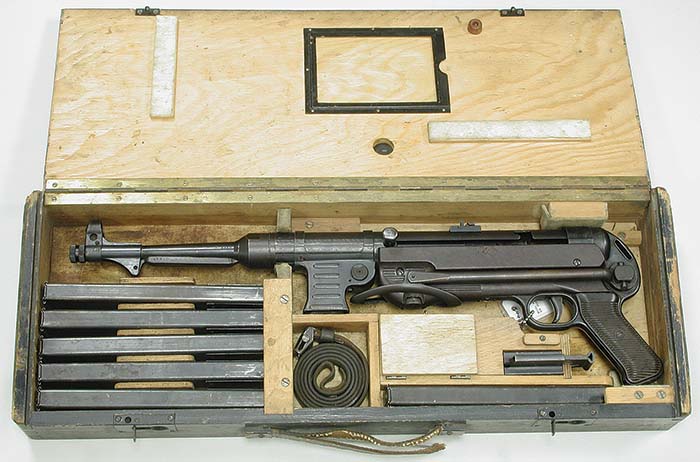
The Firearms Technology Branch is charged with ascertaining the technical nature of illegally manufactured or modified weapons. For instance, in a case where a legal semiautomatic firearm, seized from a criminal during an investigation, has been converted to fire in a fully automatic mode, FTB Firearms Enforcement Officers will inspect that weapon and record the nature of the modifications made to its mechanism. Once the weapon is deemed safe to fire, FTB personnel have ammunition of almost any type available and an indoor firing range to conduct a live-fire test of the firearm to confirm that it does in fact function as an illegally modified weapon. This same procedure is used for silencers where FTB has available the latest sound metering technology to test the sound reduction of everything from stolen US Government equipment to improvised silencers made from a variety of items available from a local hardware store or supermarket. The Branch will also test weapons which have discharged accidentally during an investigation and those that are converted to full auto illegally. Dealing with weapons that are highly modified and possibly unsound requires careful pre-firing studies and safety assessments before they can be safely fired. To ensure staff safety when handling potentially dangerous ordnance items, FTB draws on the extensive in-house experience and judgment of its staff, and occasionally outside subject matter experts when necessary.


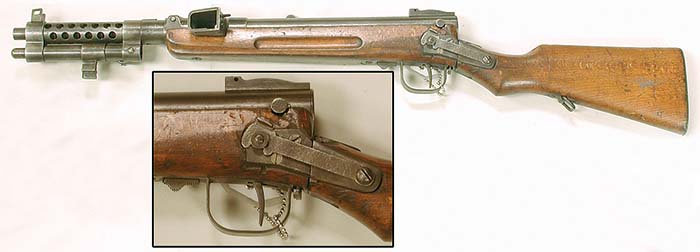
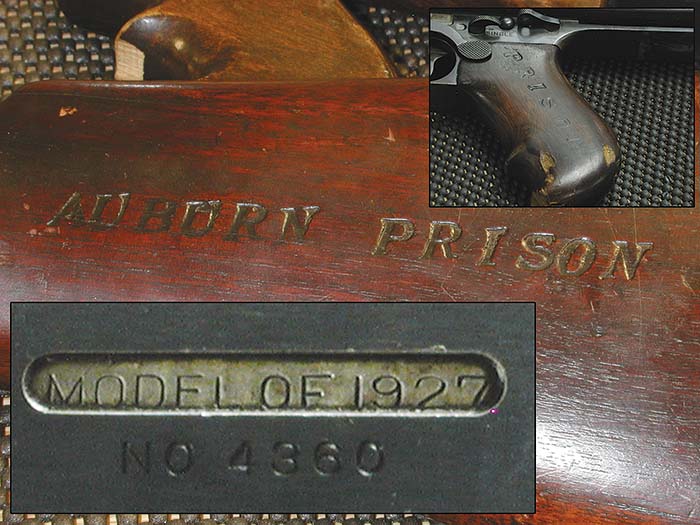
The FTB evaluates imported firearms to ensure compliance with the provisions of Title 18 U.S.C., Chapter 44, § 935(d). In cases where candidate firearms are disapproved for importation or sale due to non-compliance with import requirements, these articles must be re-exported or destroyed, and often are abandoned due to excess costs or tedious procedures. When abandoned, they may become part of the National Firearms Collection. If you were looking to see how not to seek import approval on semiautomatic SKSs or AKs, the FTB has many examples of failed attempts by importers to properly modify semi-auto rifles to meet importation guidelines. We saw samples of SKSs with some full auto parts, full auto sear mounting holes and even one that actually had a selector lever for full auto fire. Along with these, there are firearms built in proscribed countries and transshipped to a “friendly” country and falsely claimed as satisfactory in origin.
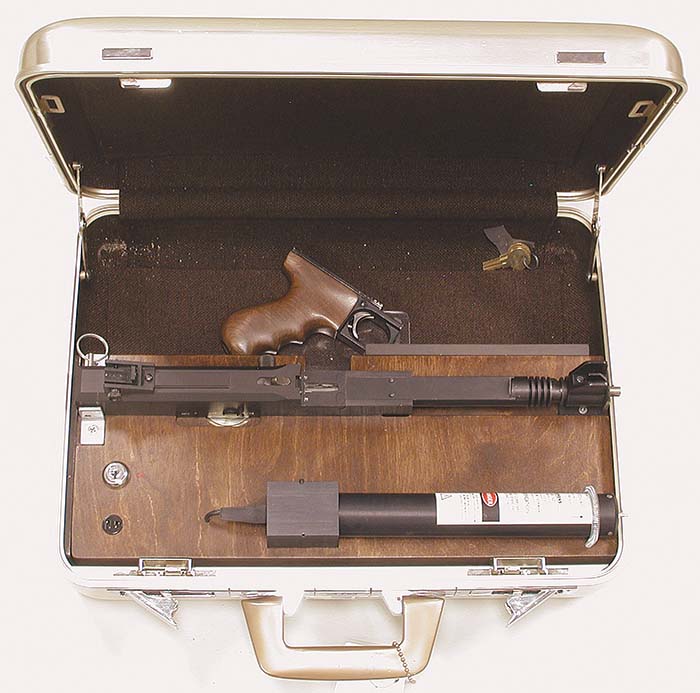

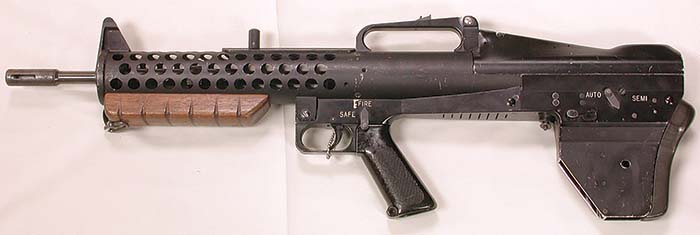

In accordance with Title 18 U.S.C., Chapter 44, § 922(p)(1), “Undetectable Firearms Act,” FTB personnel survey and test domestic and foreign origin handguns to ensure they meet the minimum size, functional, and material content requirements for commercial sale. The Branch also tests for compliance any ammunition that may fall into the controlled category of “Armor Piercing.” And finally, and in addition to an already packed business day, the FTB must also evaluate NFA-related documents and provide comments to ATF Chief Counsel, analyze proposed new legislation when requested by the Office of Public and Governmental Affairs, prepare all correspondence concerning the classification of firearms as “curios” or “relics,” and prepare correspondence for importers and manufacturers concerning marking requirements for firearms and related materials.
Now the Fun Stuff
Within the National Firearms Collection, there are all manner of weapon reference types, many that would never be seen anywhere else. This includes racks and racks of rifles, both military-style assault rifles and conventional commercial hunting and competition rifles; submachine guns in various sizes and shapes; machine guns light, medium, and heavy; sniper rifles; shotguns; and destructive devices to include single-shot, multipleshot, and automatic grenade launchers. Each weapon’s category is organized by country of origin and/or alphabetically. Below the long gun racks are cabinets with drawer after drawer of handguns arranged alphabetically by maker or country of origin, both revolvers and semiautomatics, as well as full auto machine pistols, again some made by licensed manufacturers and those illegally made in unlicensed “work shops” both in the US and abroad. Within the handgun drawers are countless examples of silencers, pen guns, flash light guns, “zip” guns, toy and miniature guns, homemade AOWs (Any Other Weapons), and even an entire line of wearable “clothing guns” that includes an assortment of belt buckle, pager, cell phone, brass knuckle, knife, arm and even ring guns.

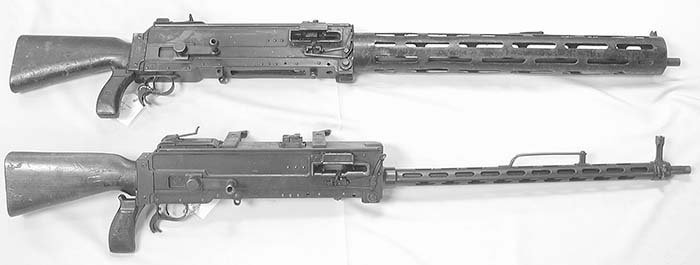
The collection includes reference samples of various automatic sears and lower receivers, such as the wide assortment of MAC-type lower receivers in various stages of completion. Within the NFC resides an excellent collection of crewserved weapons and anti-tank rocket launchers, like the infamous RPG and the WWII-era British PIAT launcher. ATF does not purchase or accept donated weapons from industry into the collection so the vast majority of the reference pieces have been added to the collection as a result of FTBs daily performance of its extensive mission portrayed above.
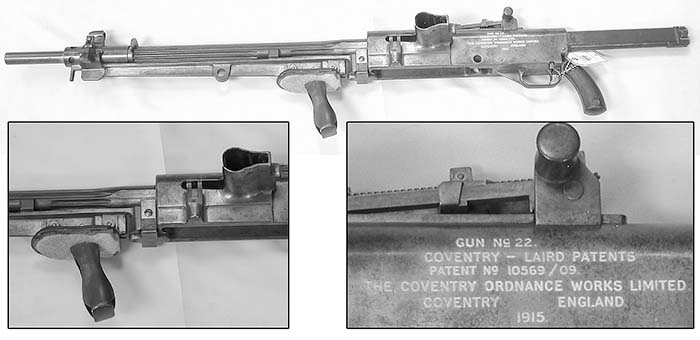
(Thanks to Richard Jones, National Firearms Collection, Leeds)


The reference collection includes mostly criminal case seizures, expired bond weapons not sold during the 5-year allowable period, those surrendered by unwary civilians, and, as indicated, samples sent in for ATF review and approval by US importers and manufacturers seeking permission for import and/or sale, which in some cases are later abandoned to ATF. When asked, our FTB guide for the day and the Vault Curator answered quickly that the most common WWII “bring-back” weapons have been MP40 submachine guns, lots of MP44s, and Czech ZB26 and ZB30 light machine guns, of all things. Not surprisingly, weapons from the Pacific theater are also not uncommon. Library pieces are donated by other agencies and many have returned from service overseas as a result of combat operations in Afghanistan and Iraq, such as Iranian-made G3 rifles included in the FTB collection. One of the more interesting unofficial “displays” was a cart marked for destruction of, shall we say, obviously well-used 1960s-era US AR-15s, M60s and M79s that were captured by the North Vietnamese after the fall of Saigon and were later smuggled back into the United States and quickly confiscated by US Customs and ATF personnel. There is even a sawed-off and exquisitely engraved 12 gauge Purdy shotgun originally valued at more than $50,000 on display No one ever said all criminals were smart.
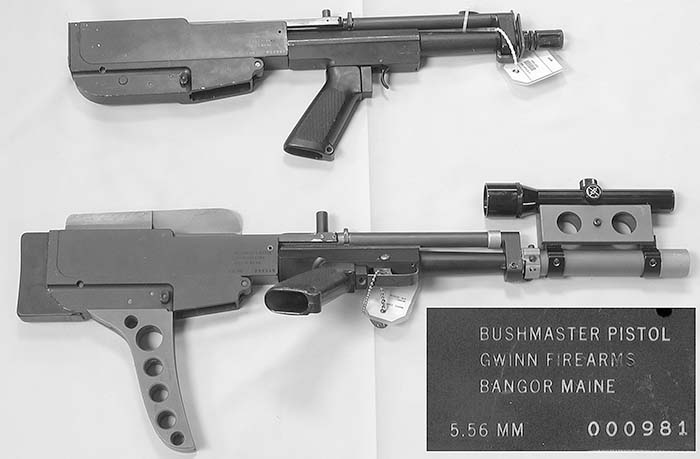
Important Notices
As we dive into this extensive photographic collection expertly recorded by SAR Editor in Chief and Technical Editor Dan Shea, it must be stated that the ATF National Firearms Collection is not open to the public. As a working reference collection, access is available to other Government personnel involved in official business generally via request to the Chief, FTB.

It must also be stated that manufacturing firearms and/or silencers, or making certain key changes in a weapon’s configuration (overall length, barrel length, external features, etc.) or changing the function of a firearm in many cases requires special approval and licensing in advance from ATF. Readers are advised to check with their local ATF office and/ or the ATF Federal Firearms Regulations Reference Guide before proceeding on home projects of this nature and to always remember “All ATF rules apply.”
Acknowledgements
The co-authors for this article and the fine folks at Small Arms Review magazine would like to thank the men and women of the Firearms Technology Branch, and the leadership at the ATF, for the opportunity to see and record the fascinating and significant ordnance pieces that make up this one-of-a-kind collection for SAR readers.

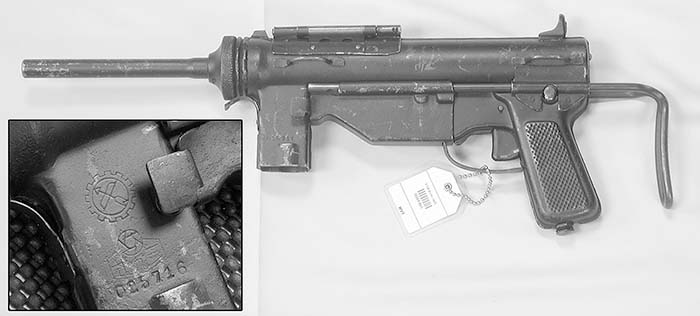










| This article first appeared in Small Arms Review V11N4 (January 2008) |
















